Tectonic earthquakes occur due to the relative motion between tectonic plates. This movement slowly builds up stress in the lithosphere – the outer, rigid, brittle layer of the Earth – that eventually is released. When the rocks reach their limit, they break along a fracture plane, also called a fault. This sudden fracture of the rocks is what we call an earthquake. The magnitude of the earthquake is related to the energy released as seismic waves when the fault breaks. The magnitude is measured by seismologists using the properties of waves recorded at seismic stations.
The amount of seismic energy released during an earthquake is related to several factors:
- The size of the fractured area on the fault plane.
- The amount of “slip”, or how much one block moved in relation to the other.
- The geological properties of the rock, which determine the amount of energy stored during elastic deformation.The amount of seismic energy released during an earthquake is related to several factors:1/ The size of the fractured area on the fault plane.
Did you know?
In Antiquity, Aristotle explained that earthquakes were the result of subterranean winds caused by the fire in the interior of the earth and by solar heating.
The origin of tectonic earthquakes was only correctly determined in 1909 when the geophysicist Harry Fielding Reid examined displacements caused by the 1906 S. Francisco, California, earthquake and proposed the elastic rebound theory. This theory says that earthquakes are generated by the sudden release of energy when a tectonic fault ruptures, and it remains accepted today.
During earthquakes, energy is released in irregular patterns, with some patches of the faults releasing more energy than others—just like what happens when you rip a piece of paper.
Every unit increase on the magnitude scale represents about 10 times higher ground motion and about 32 times more energy released.
On Earth, for every unit increase in magnitude, we have on average 10 times less earthquakes per year. But since energy increases 32 times, small earthquakes do not release enough energy to prevent large earthquakes from occurring.
During an earthquake, the fault does not rupture instantly, it ruptures at a speed around 3 km/s. This means that large and very large earthquakes can take a few minutes for the fault to be fully ruptured.
The severity of the ground motion that is caused by an earthquake on a given location varies with earthquake magnitude, the distance to the source fault, and the local ground conditions (for example, soft soil tends to amplify the ground motion). On the absence of appropriate seismic sensors, the severity of the ground motion can be estimated by its effects on people, animals, objects, and buildings. These are evaluated on a Macroseismic Scale to obtain the macroseismic intensity. The earthquake magnitude and intensity measure different properties, much like the power of lamp and the light intensity that is received by objects at specific locations.
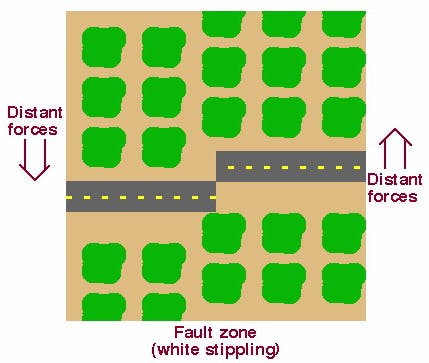
Due to Plate Tectonics the stress on a fault accumulates until it is suddenly released on an earthquake. This is the “elastic rebound” theory for the origin of earthquakes. Many animations can be found on the Internet by searching the keywords “elastic rebound”.
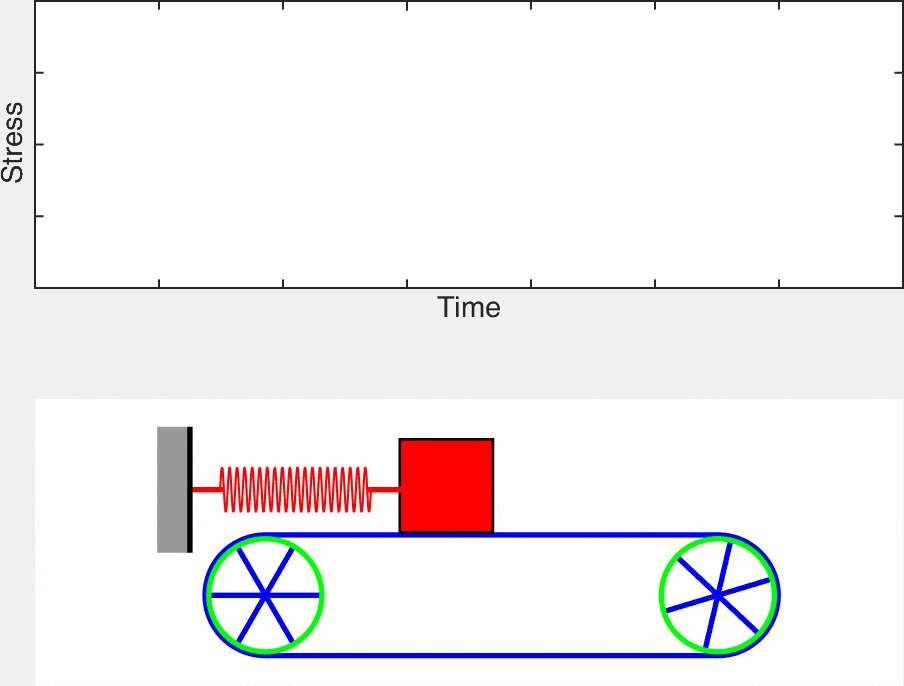
After an earthquake, the Tectonic Plates continue to move and stress resumes its accumulation, following a mostly unpredictable (on the short term) earthquake cycle. The magnitude and time of the next earthquake cannot be predicted for certain, but on the long term, the average energy release can be estimated and used for establishing building codes. The earthquake “stick and slip” model is illustrated by this mass and spring system. As the wheels roll, potential energy is stored in the spring. Most of the time, the block will stick to the treadmill, but eventually friction will be overcome and the block will suddenly slide, releasing energy, In a process akin to an earthquake.
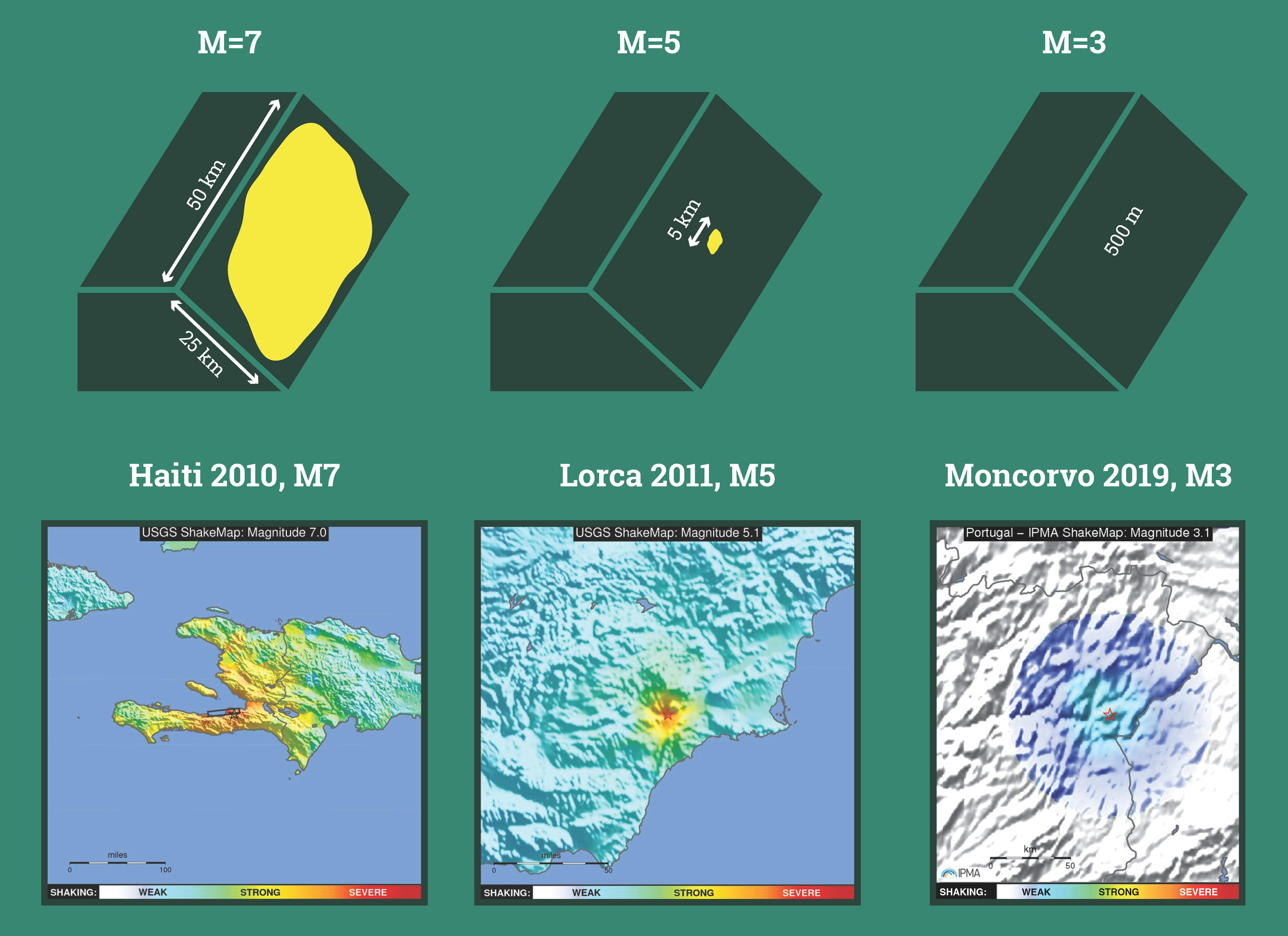
The magnitude of an earthquake, a measure of the energy released as seismic waves, is related to the size of the fault ruptured, as shown by these three examples. Small earthquakes are hardly felt or not felt at all. As the magnitude increases, a larger area surrounding the fault rupture is affected by the earthquake and the severity of the ground motion also increases.
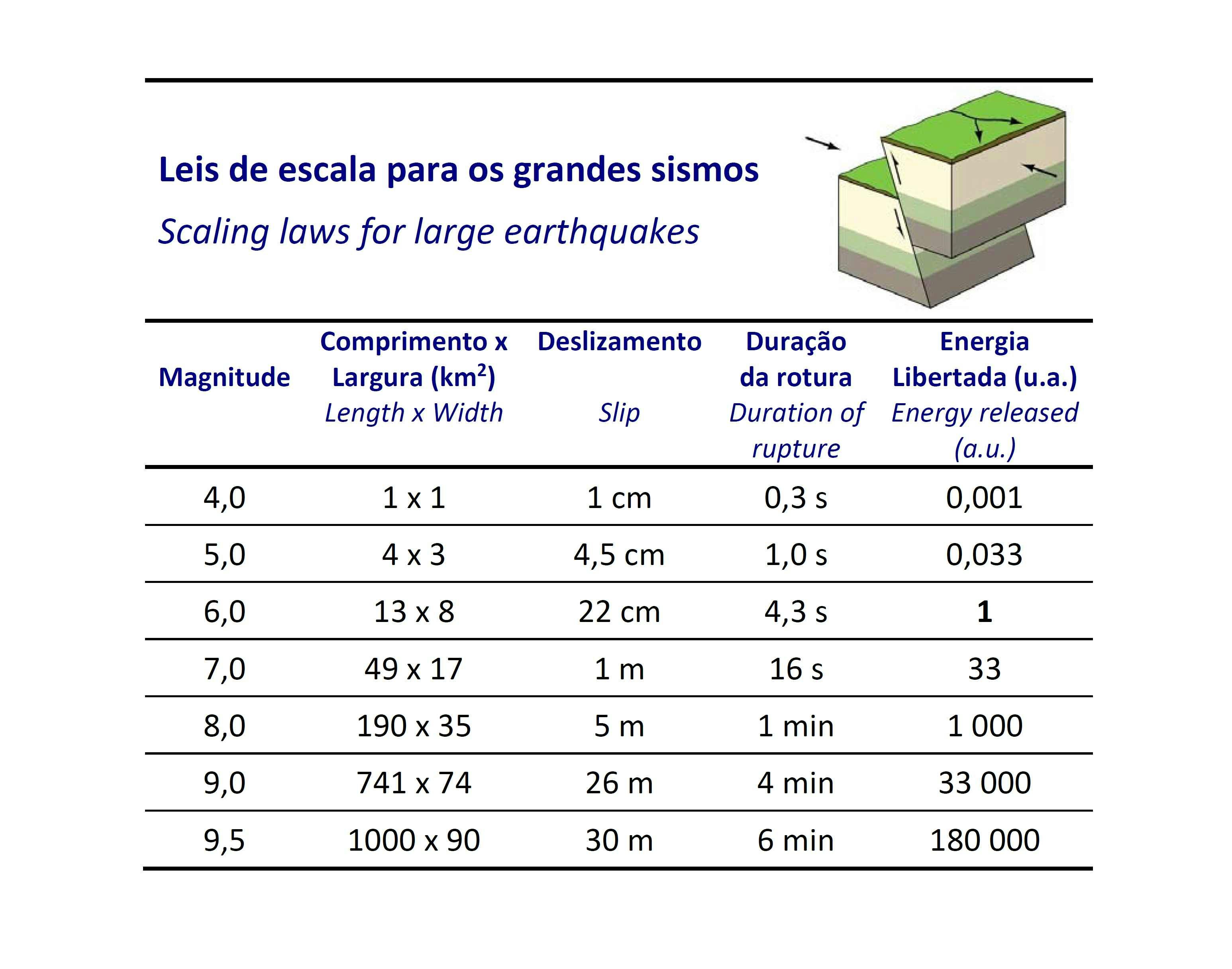
The amount of seismic energy released during an earthquake is measured by its magnitude and related to the size of the ruptured area on the fault plane andto the amount of “slip”, or how much one block moved in relation to the other. During an earthquake, the fault does not rupture instantly, it ruptures with a speed around 3 km/s, which means that large and very large earthquakes can take several minutes for the fault to be fully ruptured.
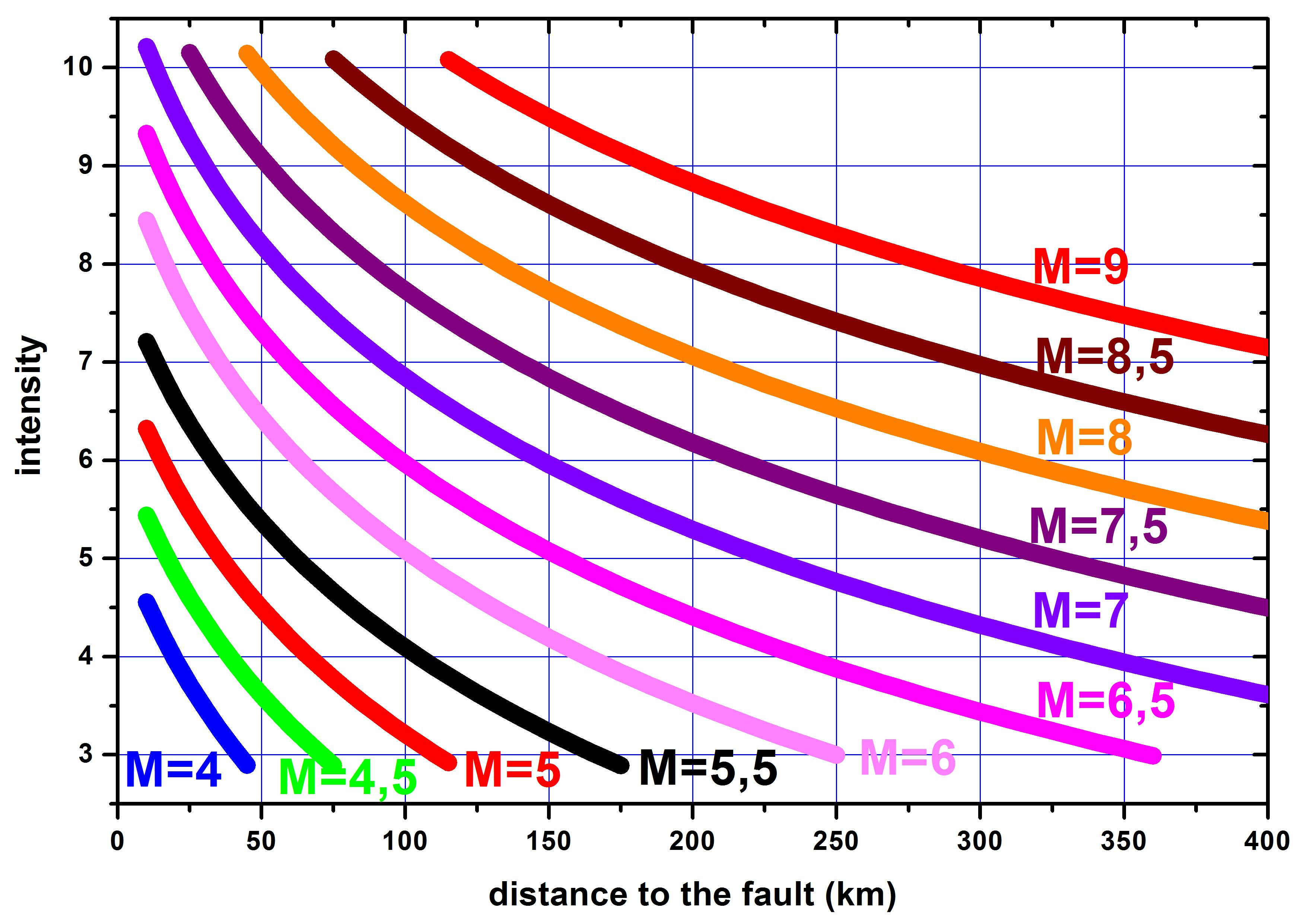
The severity of the ground motion caused by an earthquake is estimated by the macroseismic intensity. Besides local soil conditions, it depends on the magnitude of the earthquake and on the distance to the fault. A smaller magnitude earthquake, but closer, can cause the same ground motion severity as a large magnitude earthquake far away.
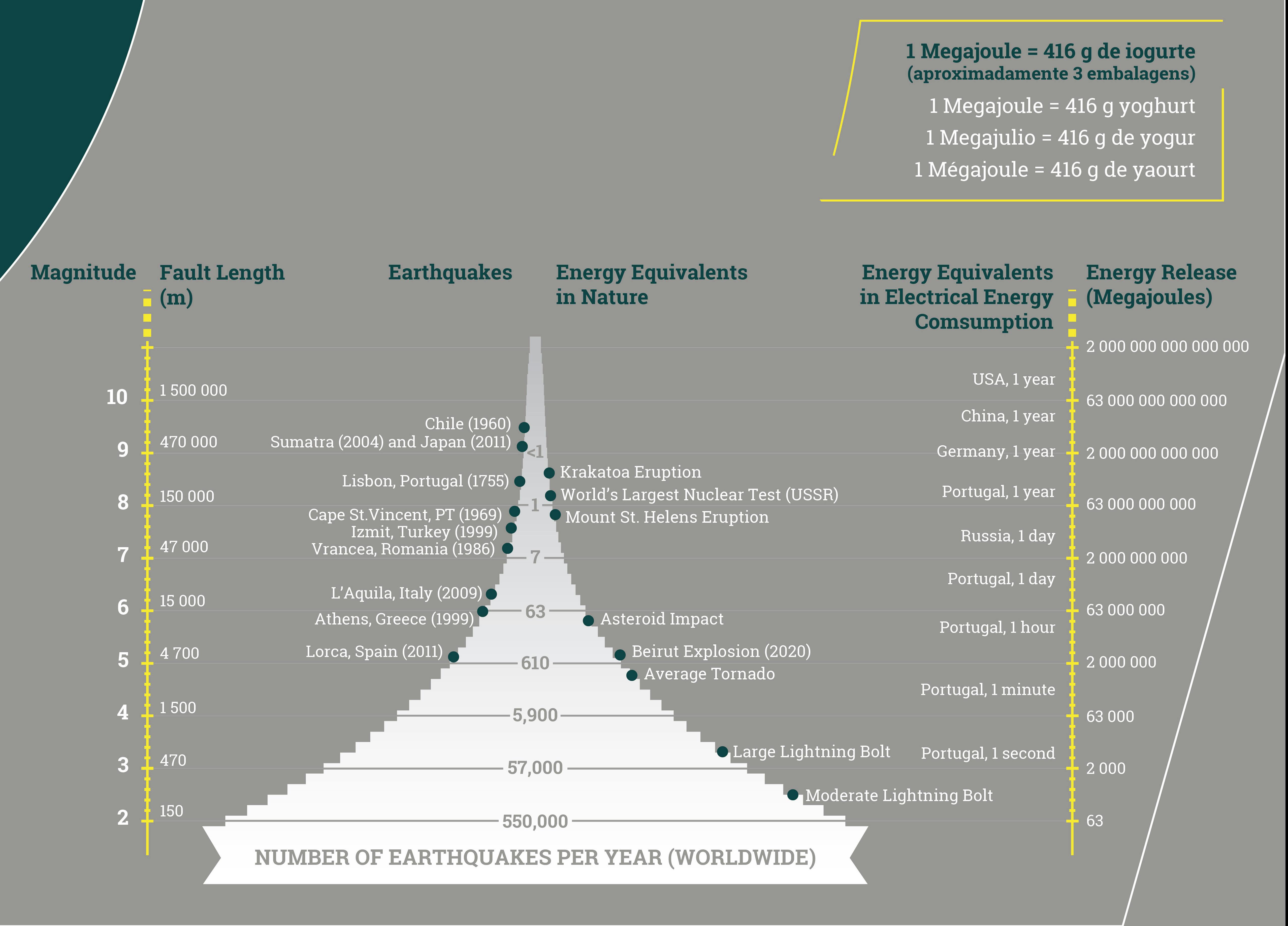
Every unit increase on the magnitude scale represents about 32 times more energy released. On Earth, for every unit increase in magnitude, we have on average 10 times less earthquakes per year. But because energy increases 32 times per magnitude unit, small earthquakes do not release enough energy to prevent large earthquakes from occurring. Earthquakes are the highest energy, natural events known to occur on Earth.
Continue Exploring
Bibliography
Stein, S. & Wysession, M. (2009). An introduction to seismology, earthquakes, and Earth structure. John Wiley & Sons.
Instituto Dom Luiz